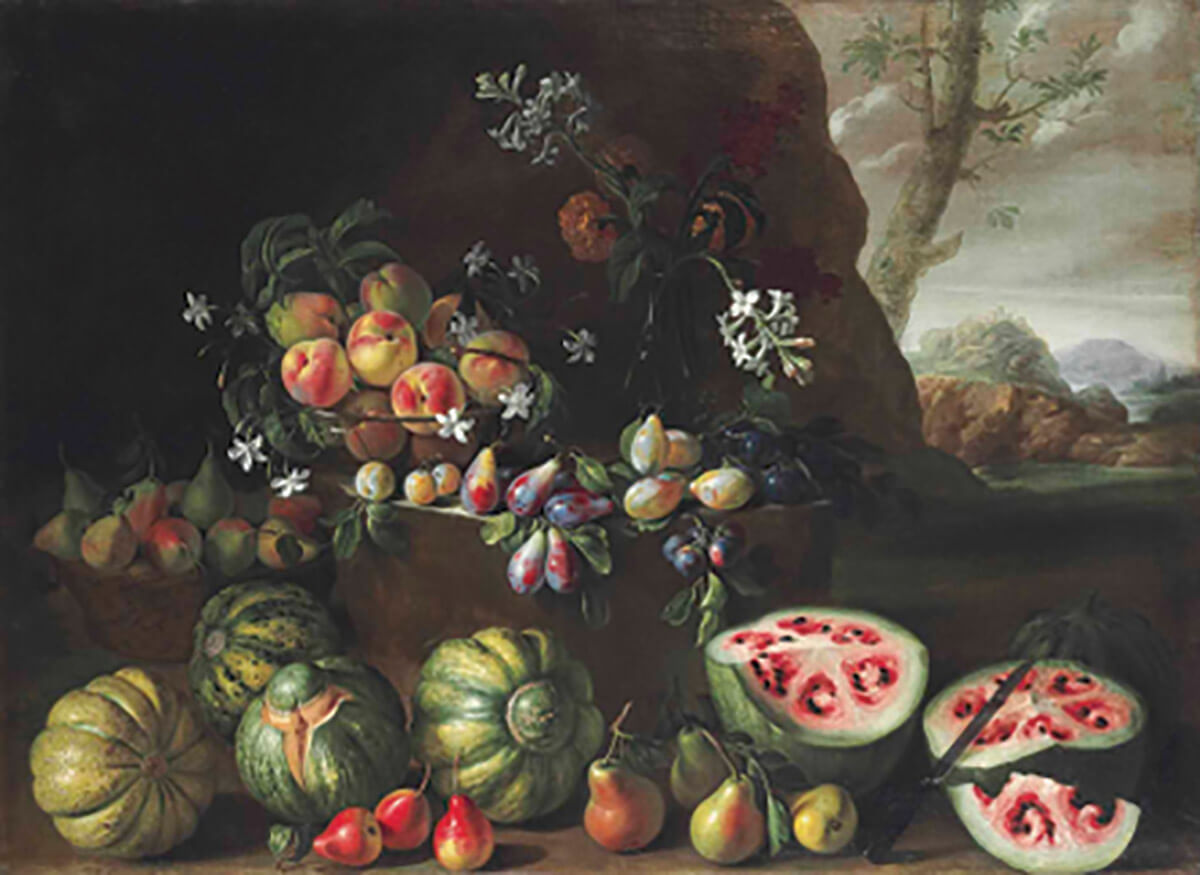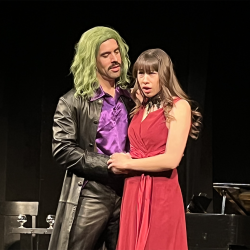Art for Fruit’s Sake

Watermelons, peaches, pears and other fruit in a landscape, Giovanni Stanchi (Rome, c. 1645-1672). Christie’s Images LTD 2015.
Look closely at the watermelon in this painting by seventeenth-century Italian artist Giovanni Stanchi. Yes, that watermelon, in the lower right corner: with its light pink flesh and swirling seed pockets, it doesn’t look much like the melons you’ll find at the supermarket. But that’s what the fruit looked like 350 years ago.
Horticulture professor James Nienhuis PhD’82 uses paintings such as this to show his students how fruits and vegetables have changed over the centuries. He takes his World Vegetable Crops class to the Chazen Museum of Art to look at Renaissance still life paintings so that his students can see in detail how people have bred characteristics into and out of plants.
“With grains, archaeologists can look at actual samples to learn what people ate,” says Nienhuis, “but then, grains are dry. Vegetables, by their nature, have a lot of moisture, so they’re delicate. They don’t last. But still life paintings show us what they looked like.”
Nienhuis says that, in spite of the course’s official title, he calls it Vegetables: Works of Art You Can Eat. “That’s what vegetables are like,” he says. “They’re like rolling up a Monet like a taco and eating it.”
Published in the Winter 2015 issue



Comments
No comments posted yet.